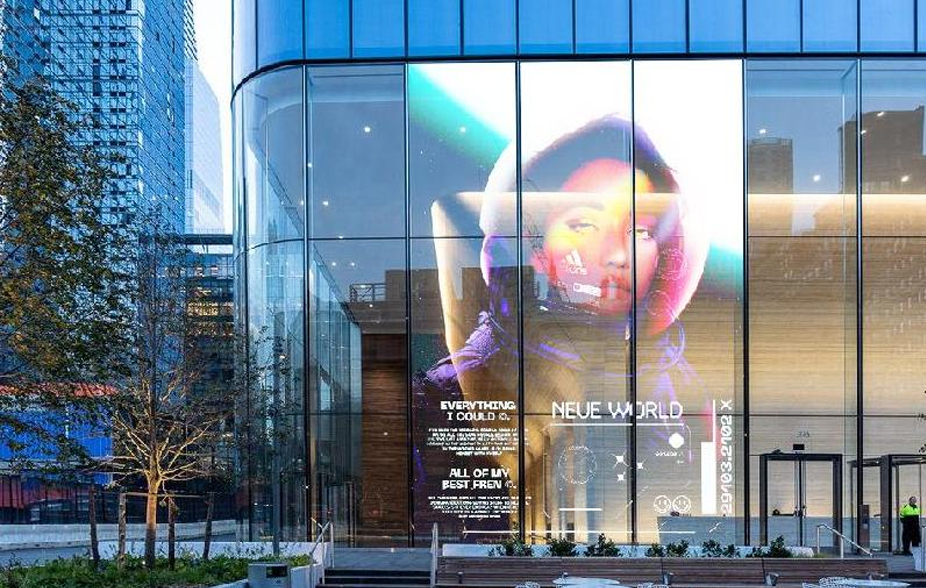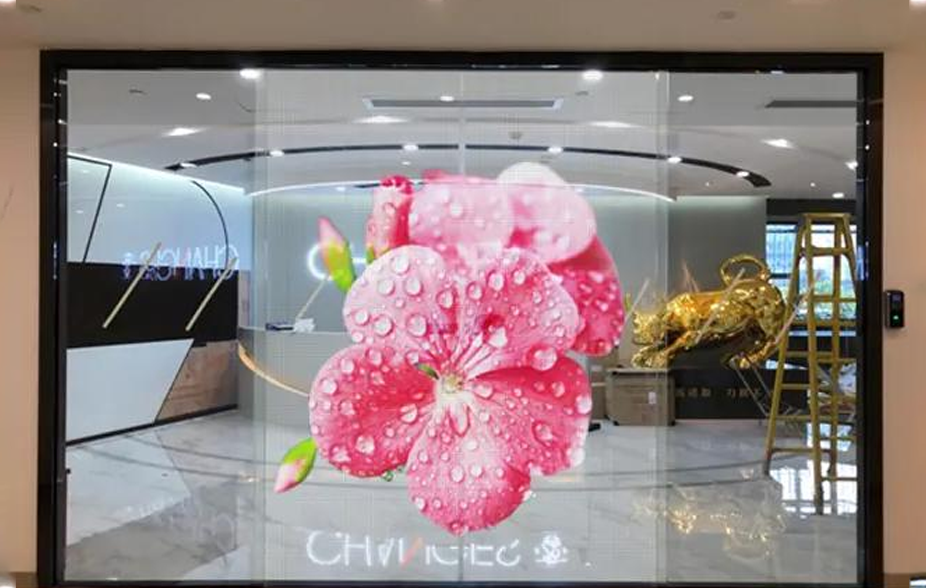LED Flexible Film Screen
LED Flexible Film Screen Applications


LED Flexible Screen Features
Ultra-thin and Ultra-light
The thickness of the film screen is 1-3mm and the weight is 2kg/sqm.
Supports cutting, highly flexible
Can be easily cut to desired size. Can be applied to glass/wall surfaces of any curvature.
Cost-saving installation
No steel frame structure or changes to the building’s appearance are needed, effectively reducing transportation and installation costs.
High transparency rate and easy to install
Transparency Rate up to 95%. It won’t affect daily lighting just lightly stick the film screen and connect the signal and power. It adopts a solution of point-to-point transmission.
Resume from Breakpoints
The light-emitting chips use a micron-level light source and a four-in-one package method. Besides LED chips there are no other electronic or device components. It adopts a solution of resuming from breakpoints, so that if one point falls, it will not impact the normal display of other chips.




LED Flexbile Film Screen Specifications

FAQ
- Q1: What is the LED Flexible film screen?
LED Flexible Film is a cutting-edge solution for all your indoor or outdoor signage needs. With its ultra thin, flexible, and self-adhesive tiles that can be cut and bent,Led film screen is flexible and can be pasted with curved glass buildings. - The LED Flexible film screen could be high Brightness Glass Window、 Led Video Wall、 Advertising Led Film Screen 、Indoor Outdoor Transparent Led Display.
Q2:The Benefits of commercial Building on intelligent Technology(including electronic led flexible film )Application
Since their inception, PDLC flexible film on commercial products have been designed to save money. Heating and cooling are some of the largest energy expenses in any commercial buildings. Thermostatic radiator valves can match remote temperature sensors to a radiator, allowing you to make spaces farther away more comfortable. All you need is Wi-Fi to operate them. These devices enable control of commercial building heating in real-time or to run it on a customized schedule that fits a routine.
Home water heaters consume a great deal of energy. An energy meter paired with a contactor can schedule when the water heater runs, track its electrical consumption, and make adjustments to compensate when extra hot water is needed.
Humidity and temperature control sensors detect moisture and enable a comfortable, relaxing environment.
If a utility provider charges Time-of-Use (TOU) rates, scheduling features can make a commercial buildings more energy efficient. Simple changes such as turning off devices during peak hours when rates are higher can make a dramatic difference. An EV can be charged when electricity costs the least.
Intelligent components enable the flexibility to connect different devices to each other and to other systems directly, without needing a cloud, hub, or even the internet. They can be used completely off the grid using only Wi-Fi.
These intelligent products have built-in microcontrollers and web servers with an application programming interface (API) that executes locally. The devices are compatible with existing home automation setups and voice assistants, and work with various ecosystems. The ability for each device to communicate and control other devices makes their capability and customizability virtually endless.
The conveniences that come with smart commercial automation encourage self-care. With a simple voice command, you can easily adjust the temperature of a room, control lighting, and even play music. This empowering technology lets you find and improve preferred aspects of living in a commercial office building.
